Escaping the Strange Loop
Interactive installation that lets teams navigate climate futures.
- Client: EUROfusion consortium / CIID Research
- Year: 2019
- Role: UX & Digital / Physical Prototype Developer
- Tags: Speculative Design, Installation, Climate Futures, Data Visualization, Tangible Interfaces
Project Overview
Escaping the Strange Loopis a touring interactive installation that transforms climate and energy data into a physically navigable, narrative-rich experience. Designed for public engagement across Europe, it invites teams of three to step into a looping timeline, 2050, 2080, and 2100 and make real-time decisions about energy futures.
Usinglive projections,d3.js visualizations,Arduino-powered mission consoles, and afinal “hologram” prototype, the project immerses everyday visitors in the trade-offs of climate policy through storytelling and embodied interaction.
Challenge
EUROfusion and CIID set out to solve a major problem:
How can we make fusion energy and its place in a complex global climate system tangible, human, and emotionally engaging for non-experts?
Most people encounter energy data through static infographics or dense reports.Strange Loopbreaks that mould by turning scientific models into live, participatory futures.
My Role
AsUX & Digital / Physical Prototype Developer, I was responsible for bridging the physical and digital layers of the experience. My work included:
Designing and building theArduino-based mission consolesused to trigger narrative branches and log participant decisions
Developingd3.js visualizationsof policy choices and energy artefacts
Coordinating thedata interfacewith a Node.js narrative engine and synchronized media projections
Helping structure the spatial and interaction logic of the looped mission sequence
Building the“holographic finale” prototype, a glowing planetary object that visualized cumulative group decisions
Design Approach
The exhibition layout formed acircular “strange loop”:
Visitors began in2050, encountered branching narratives based on energy trade-offs, and progressed to2080and2100
Each loop presentedmission artefacts projected data stories, policy vignettes, or physical touchpoints.
Participants interacted with acustom consoleat each station using ID badges to make collective decisions.
Their journey concluded at aplanet hologram, a lo-fi light sculpture that reflected the outcome of their path.
Key interaction principles:
Embodied navigationthrough time
Collaborative decision-makingvia tangible hardware
Narrative immersionled by an AI guide calledGAIA
Constraints & Pivots
Latency: We needed low-lag projection responses across distributed physical inputs, Node.js + Arduino performed flawlessly
Narrative pacing: Early tests revealed cognitive overload; we introducedGAIAto guide timing and reduce friction
Scenario scope: Originally four loops (incl. 2030), we pared it down to three for deeper engagement
Post-show data: Visitors asked for take-home insights sparking plans for a digital companion tool
Impact
Toured acrossmultiple European citiesto audiences of scientists, students, policymakers, and the general public
Participants referred to policy artefacts and timeline events as if they werereal, showing deep immersion.
EUROfusion reported stronger public understanding and emotional connection to fusion energy scenarios.
Earned multiple recognitions across design and interaction awards for its speculative, educational, and civic impact
Reflection
Proud of:
Designing hardware and interfaces that made complex data feel tactile and human.
Helping people see themselves asagentsin long-term energy decisions not just observers
Challenges:
Building stable hardware that synced seamlessly with evolving narrative logic
Testing interactions across varied group dynamics, from families to expert researchers
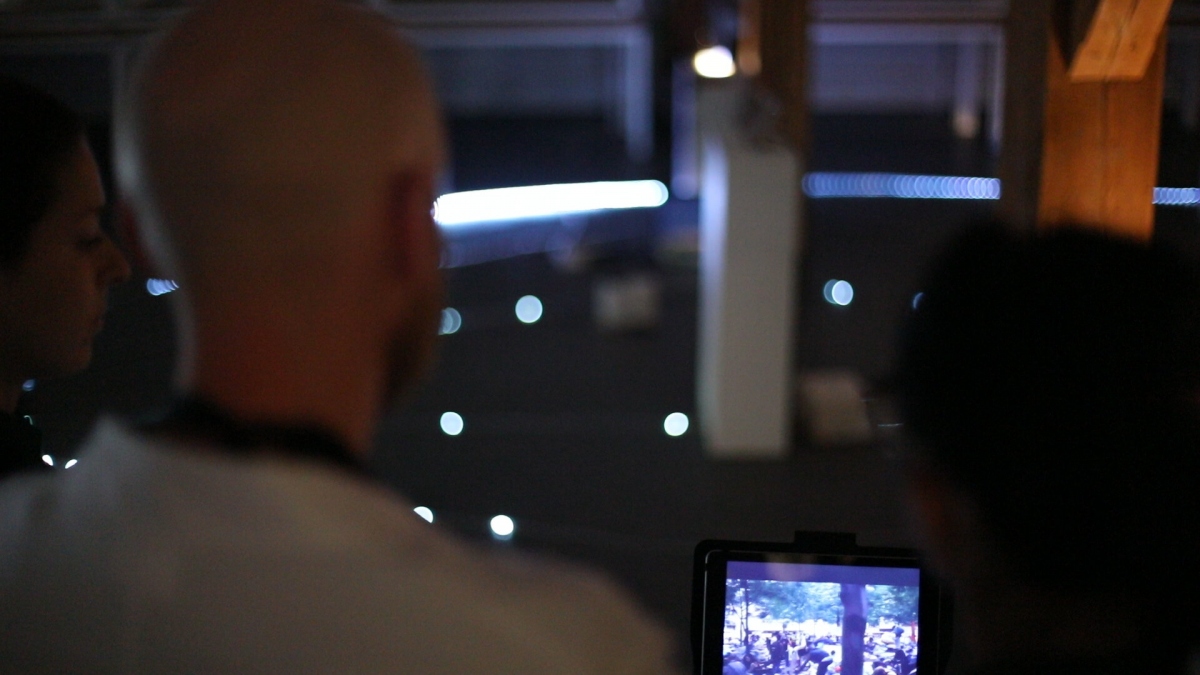
es_01
Participants gather around a dimly lit loop of LED markers in the exhibition hall, peering at a tablet that streams real-time projections of future energy scenarios—evoking the immersive, game-like environment of Escaping the Strange Loop.
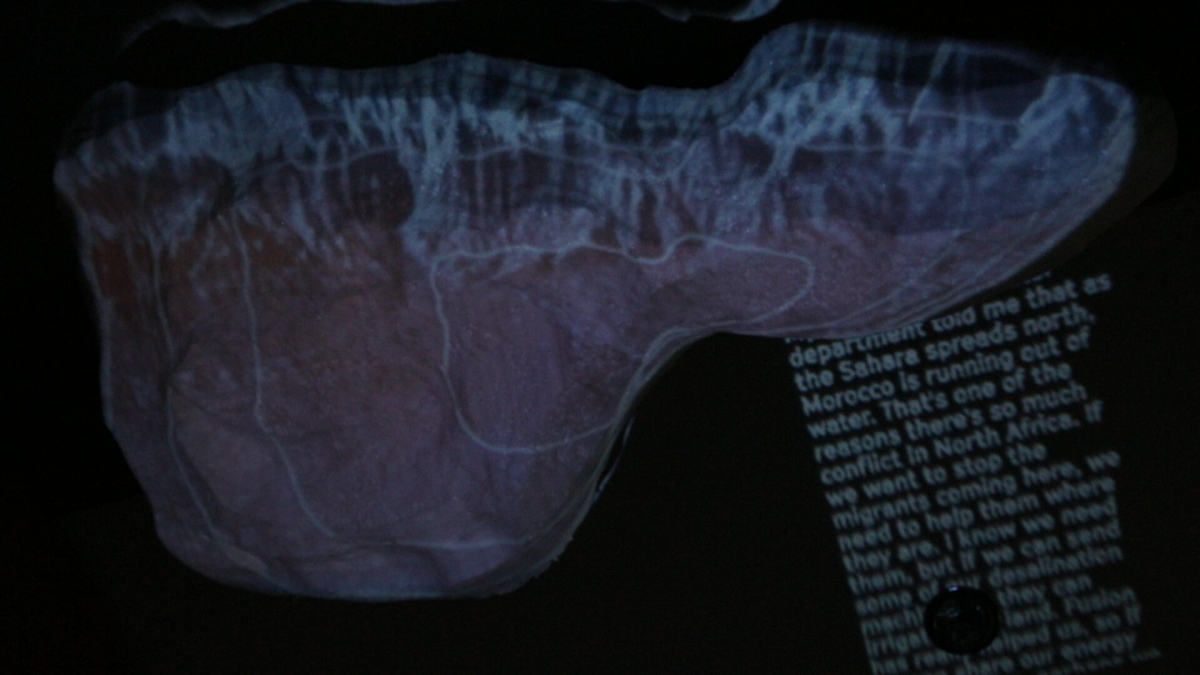
es_02
A topographic data-slice of North Africa is projected onto a curved surface, overlaid with scrolling policy narratives about water scarcity and migration—one of the three synchronized “mission slices” that anchor each loop’s storyline.
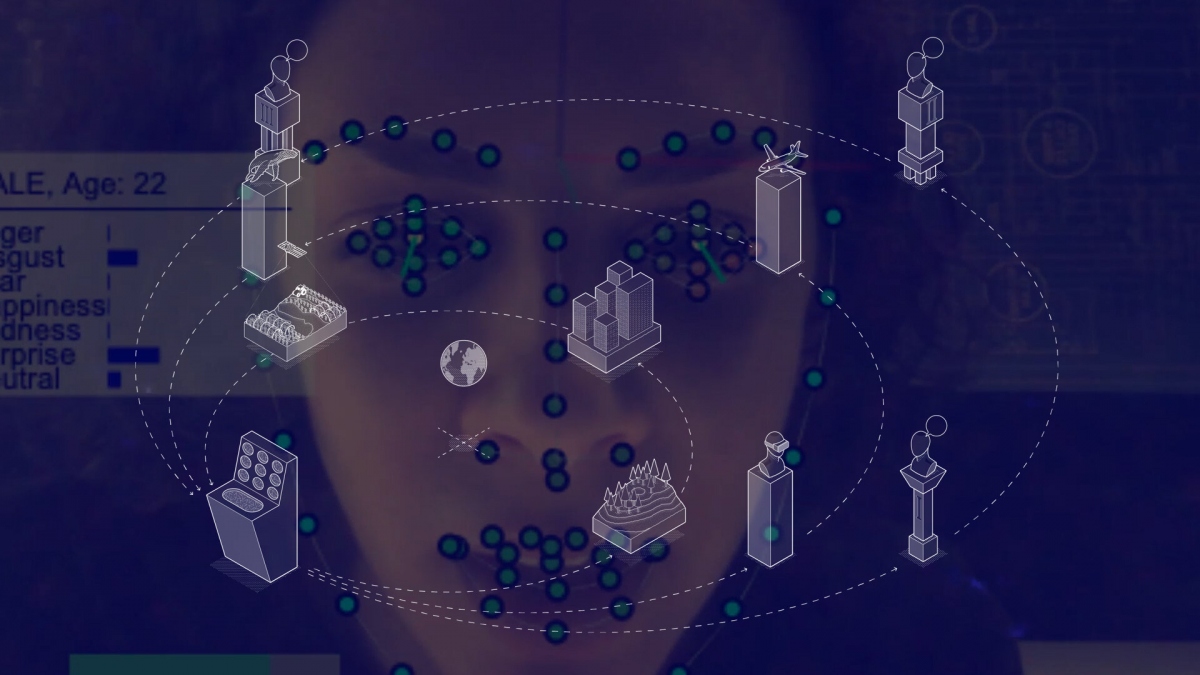
es_03
A circular d3.js visualization of eight energy-policy artefacts floats over a live video of a participant, illustrating the branching scenarios teams navigate at each mission node under the AI guide GAIA.
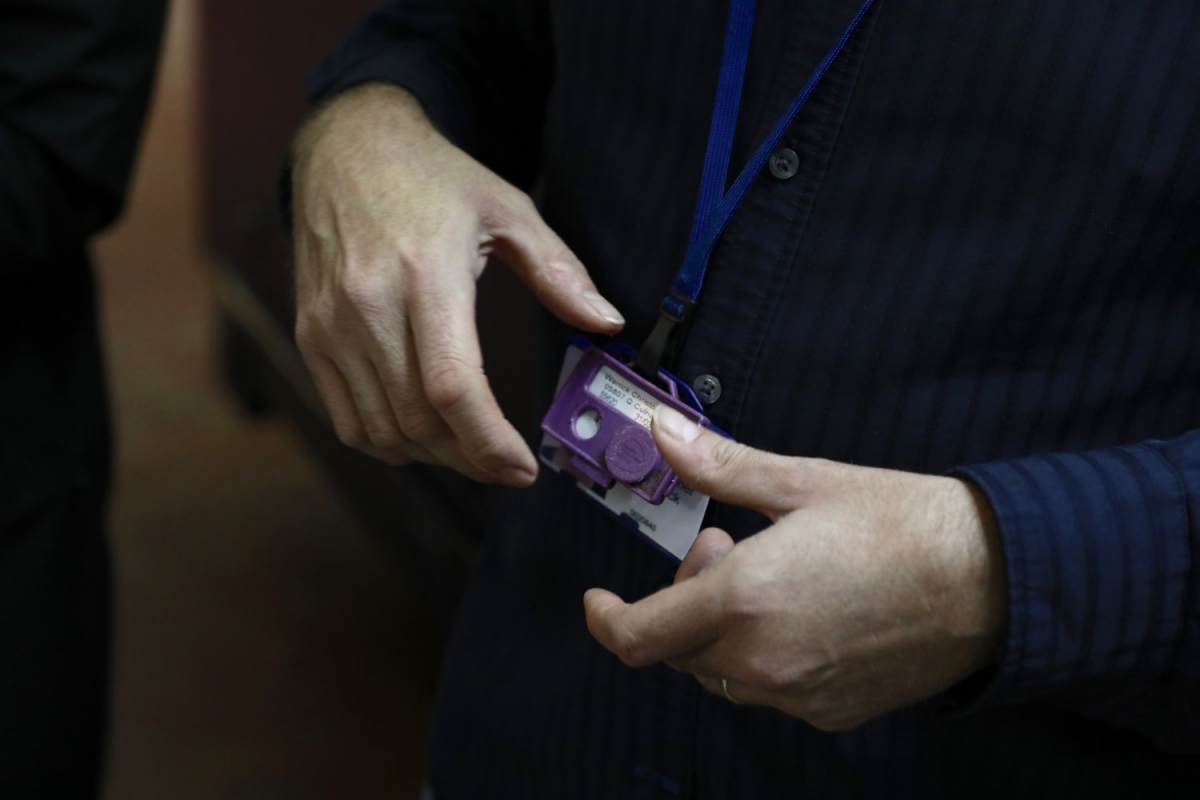
es_04
Close-up of a visitor’s lanyard card being slipped into a custom Arduino-powered “mission console” reader, which triggers the next branch of the installation’s narrative and records the team’s collective choice.
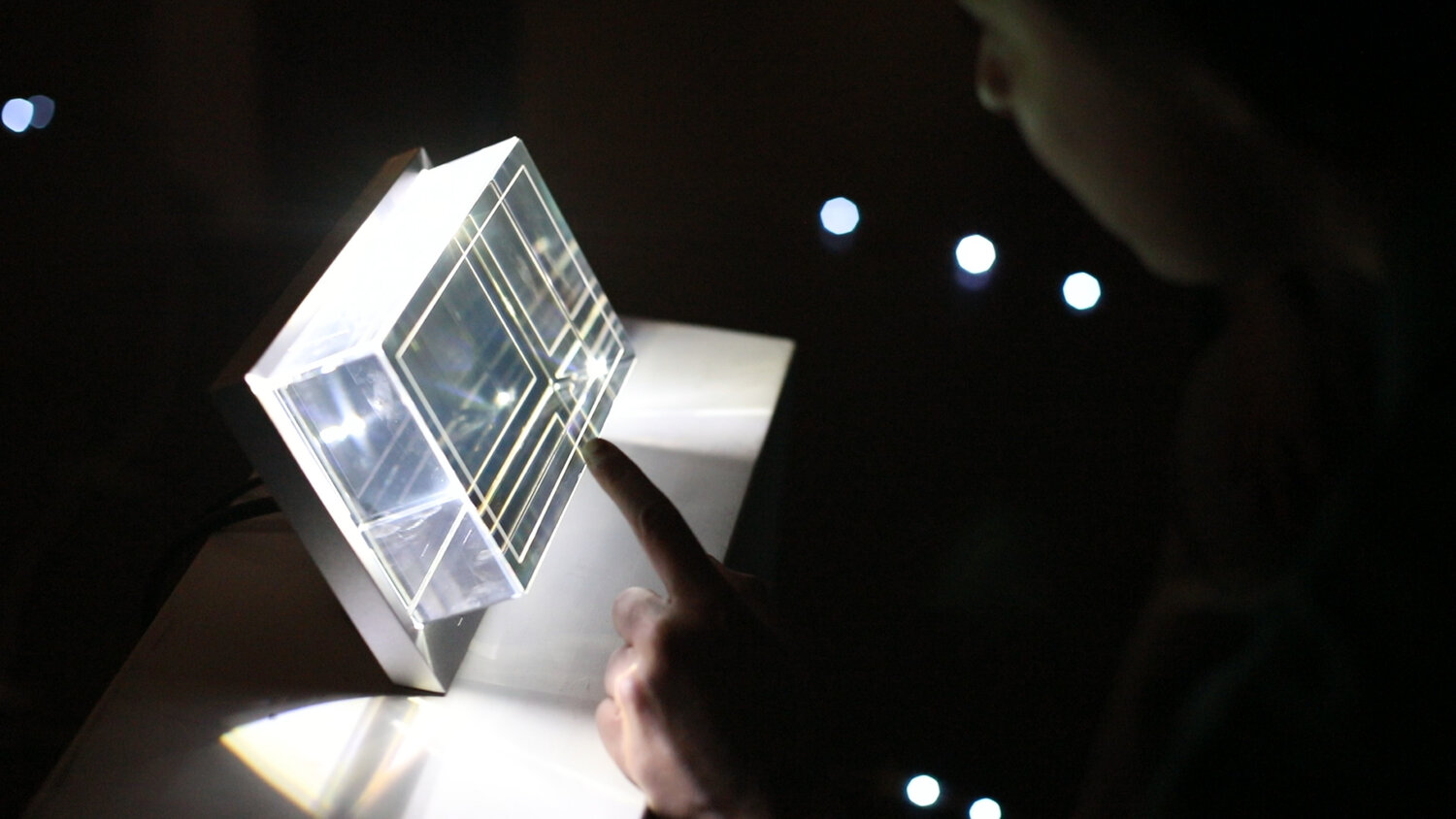
es_05
The central “hologram finale” prototype—a clear acrylic cube with etched concentric lines—emits light to form a low-fi planet model, visualizing the cumulative impact of each team’s energy choices.
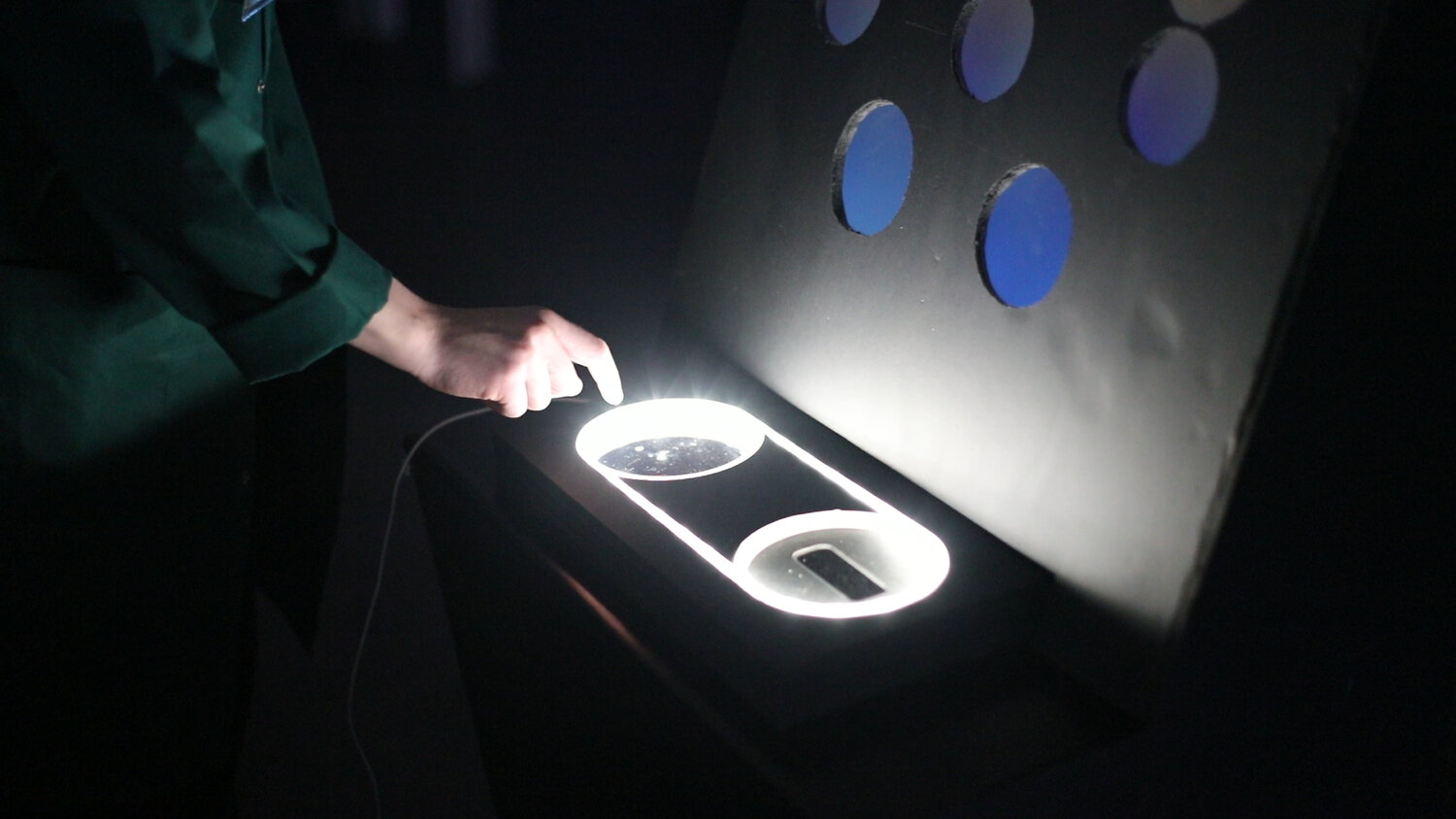
es_06
One of the mission consoles in action: a visitor presses a capacitive pad next to projected circular icons, activating the next animated scenario slice in the loop of 2050, 2080, and 2100 missions.

es_07
Vector diagram of the full circular layout showing eight distinct policy artefact nodes orbiting a central globe—used in design documents to map physical placement and narrative flow across the three mission loops.
